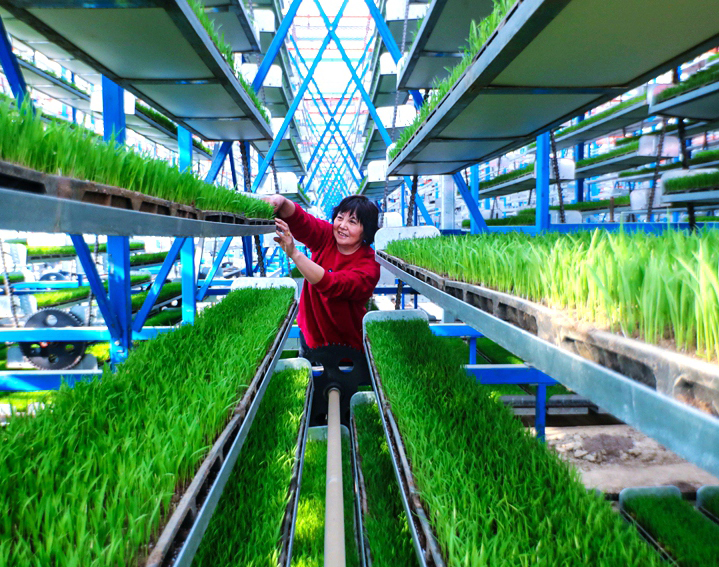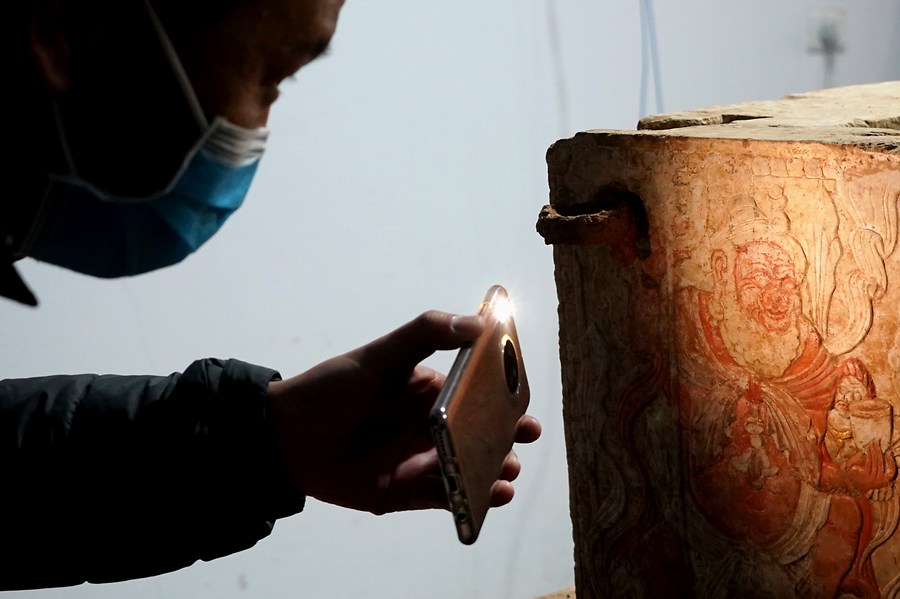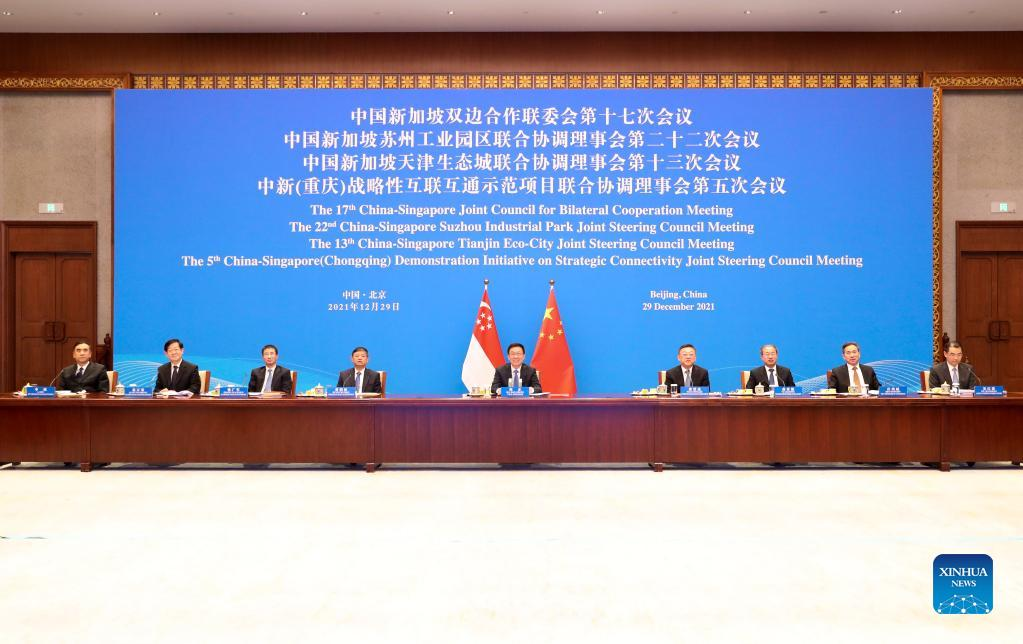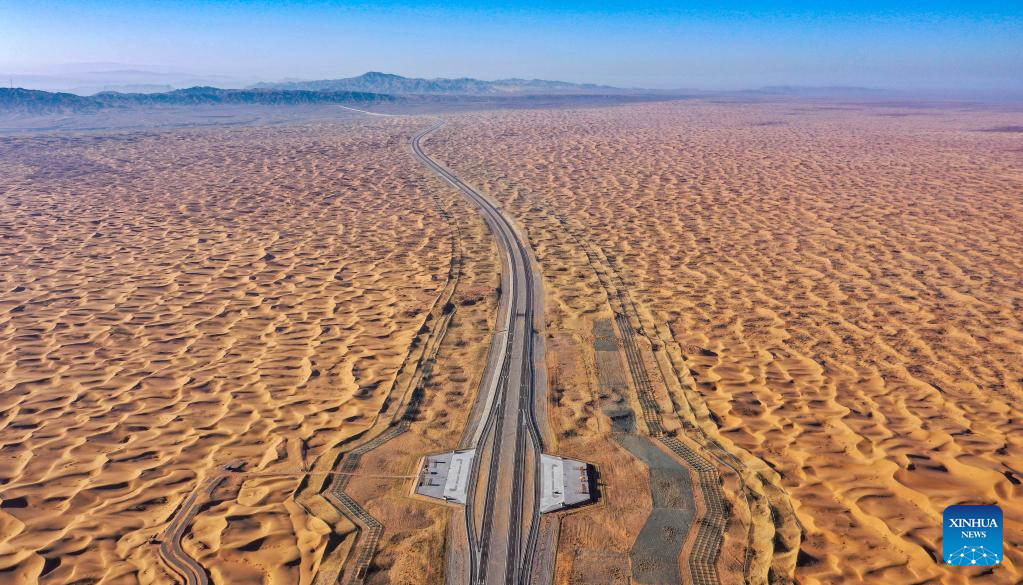Digital village construction brings better lives to rural residents
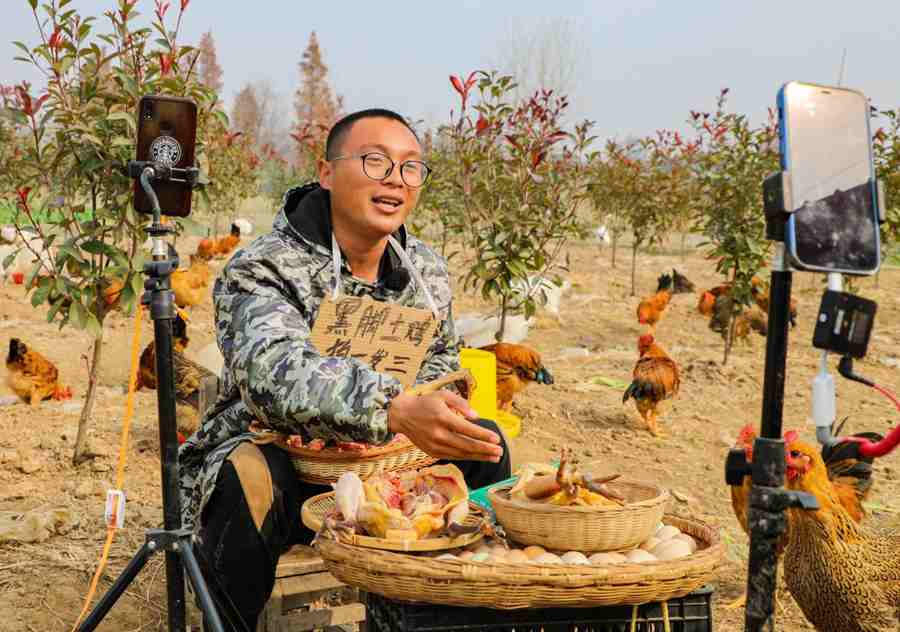
A live streamer with a trade company in Zongyang county, Tongling city, east China’s Anhui province, helps sell free-range chickens online, Dec. 7, 2021. (People’s Daily Online/Zhou Feng)
As China’s digital infrastructure continues to improve, the construction of digital villages has promoted the transformation of consumption patterns in rural areas, bringing convenience to rural residents and raising the quality of life for people living in rural areas.
Zhu Yinghua, a resident in Jiushan village, which is situated deep in the mountains in Xiabaoping township, Yichang city, central China’s Hubei Province, is hooked on the convenience of online shopping.
“I recently bought a multi-function electric cooker online, which was delivered to my home three days later,” Zhu said. Zhu also purchased a water heater and many other products online, saying that villagers now buy higher-quality products from around the country online.
In the past, villagers had to trek along a muddy road to buy things in the township. Now a hardened road connects the village to the outside world, and an express delivery station in the village makes online shopping more convenient for villagers.
The village has offered e-commerce training courses to villagers. After taking these courses, Zhu opened an online store to sell farm produce, such as tea and Gastrodia elat, an herbal medicine. Last year, the sales volume of Zhu’s store exceeded 300,000 yuan (about $44,910). “The construction of digital villages has changed my life,” Zhu said excitedly.
Jiushan village epitomizes China’s efforts to build digital villages and facilitate the flow of industrial goods into rural areas and the flow of agricultural products to cities. The Ministry of Agriculture and Rural Affairs has held training sessions for more than 100 million farmers on how to use smartphones. In 2021, express delivery parcels reached over 80 percent of administrative villages across the country. Last year, China’s rural online retail sales reached 2.05 trillion yuan, and the online retail sales of agricultural products hit 422.1 billion yuan, up 11.3 percent and 2.8 percent year on year, respectively.
Meanwhile, internet-based healthcare has provided rural residents with convenient access to quality medical resources. At present, 29 provinces in China have established provincial-level telemedicine platforms, and 2,400 medical consortiums have worked with hospitals to establish telemedicine centers. In addition, 535 counties, districts and cities across the country have built county-level medical communities that cover county-level hospitals, township health centers, and village clinics.
Recently, experts from the People’s Hospital of Jiaxiang County in Jiaxiang county, east China’s Shandong Province, conducted remote consultations via a telemedicine platform with a health center in the county’s Laosengtang township for a patient named Du Jibin in the township.
After receiving suggestions from experts, Du’s doctor, Gu Erying, gave targeted medical treatments for the patient, who gradually recovered..
Two health service stations and 21 village clinics in the township have adopted telemedicine technology. Jiaxiang county has realized a remote medical service system covering four administrative levels to alleviate problems including poor accessibility and affordability of health care services for rural residents.
Digital technology has also helped revive traditional rural culture, generating wealth for villagers.
Zhu Fujun, a villager in Xunxian county, central China’s Henan Province, is an inheritor of the craft of making clay sculptures. This craft, with its history of more than 1,000 years, is a national intangible cultural heritage item.
He began promoting the craft via short videos on the popular Chinese video-sharing app Kuaishou in 2017. Much to his surprise, his first short video about the craft garnered more than 2 million views.
To perfect his skills, Zhu became an apprentice of a provincial-level inheritor of the craft. Consequently, his videos received more likes.
Zhu has also held live-streaming shows to sell vivid clay sculptures. During his first live-streaming session, he received about 200 orders of clay sculptures in a few seconds. He has helped over 100 craftsmen sell nearly 100,000 clay sculptures.
“We encourage young people to create excellent short videos so as to digitize fine rural cultural resources, to effectively pass on rural culture, and to inject new impetus into the revitalization of rural culture,” said Zhou Xiaohan, a Kuaishou executive.
Recommend for you
Archaeologists find 570 ancient tombs in central China
China, Singapore vow to enhance cooperation
Viewpoint
- Gov't trying to help students find jobs
- Tackling inflation: How China is helping mitigate global price spikes
- Xinhua Headlines: China's Xi'an tightens control measures amid COVID-19 resurgence
- Russia's Nord Stream 2 pipeline ready to pump gas to Europe
- Uruguay confirms first cases of Omicron
- Walking in footsteps of Marco Polo
News
- Farmers cultivate rice seedlings ‘in the air’ in C China’s Henan
- Henan launches new freight route to Miami
- Sergio Diaz appointed head coach of CSL club Henan Songshan Longmen
- Activities held to celebrate upcoming Latern Festival across China
- January box-office earnings hit record high
- Villagers rush to complete overseas orders while embracing Spring Festival
